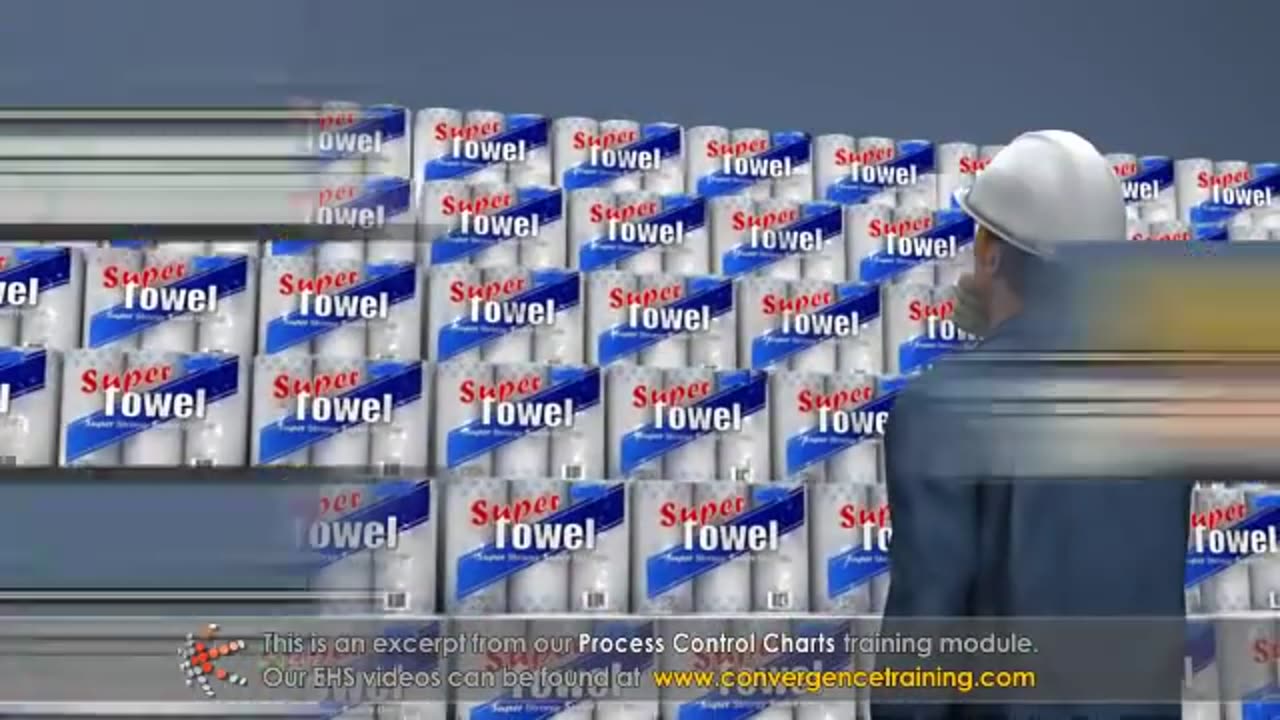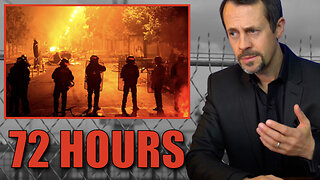Premium Only Content

Process Control Charts
Process Control Charts are tools used in statistical process control (SPC) to monitor and control processes. They help detect variations in a process and determine whether the process is stable or needs corrective action. Here's a breakdown:
---
### **Key Components of a Control Chart**
1. **Center Line (CL):** Represents the process average or mean.
2. **Upper Control Limit (UCL):** The upper threshold for acceptable variation, typically set at three standard deviations above the mean.
3. **Lower Control Limit (LCL):** The lower threshold for acceptable variation, typically set at three standard deviations below the mean.
4. **Data Points:** Represent individual measurements or averages of samples taken over time.
5. **Control Zones:** Divide the chart into areas (±1σ, ±2σ, ±3σ) to help detect patterns or trends.
---
### **Types of Control Charts**
1. **Variable Data Charts (Continuous Data):**
- **X̄ and R Chart:** Monitors the process mean (X̄) and range (R).
- **X̄ and S Chart:** Similar to X̄ and R but uses standard deviation (S) instead of range.
- **Individuals and Moving Range (I-MR) Chart:** For single measurements, tracks individual values and their moving range.
2. **Attribute Data Charts (Discrete Data):**
- **P Chart (Proportion Chart):** Monitors the proportion of defective items in a sample.
- **NP Chart:** Tracks the number of defective items in a sample (used when sample size is constant).
- **C Chart:** Counts the number of defects per unit.
- **U Chart:** Tracks the number of defects per unit where the sample size can vary.
---
### **Steps to Create a Control Chart**
1. **Define the Process:** Identify the process or characteristic to monitor.
2. **Collect Data:** Gather data points in samples over time.
3. **Calculate Parameters:** Determine the mean, range/standard deviation, and control limits.
4. **Plot the Chart:** Plot data points, the mean, and control limits.
5. **Interpret the Chart:** Look for patterns, trends, or points outside control limits.
---
### **Interpreting Control Charts**
- **In Control:** Data points are within control limits with no unusual patterns.
- **Out of Control:** Indicators include:
- Points outside the control limits.
- Run of 7+ points above or below the mean.
- Sudden shifts or trends.
- Repetitive patterns or cycles.
---
### **Benefits of Control Charts**
- Detect process instability early.
- Identify special cause variations (unexpected events).
- Monitor process improvements over time.
- Improve decision-making with data-driven insights.
Control charts are essential for ensuring consistent quality and performance in manufacturing, service industries, and beyond.
-
 7:58
7:58
HSESafetyInformation
1 month agoAuthentic Peshawari Rosh _ Namkeen Gosht Recipe __ Traditional KPK and Baluchistan
581 -
 16:05
16:05
Nick Freitas
10 hours agoSaving a Billion a Day
5292 -
 16:49
16:49
CarlCrusher
23 hours agoBizarre Secret Mysteries of the Grand Canyon and Colorado River Badlands
3282 -
 28:57
28:57
Esports Awards
15 hours agoVeracity From Unsung Hero to International Esports Host | Origins Podcast #3
21 -
 6:38
6:38
The Official Steve Harvey
16 hours ago $0.02 earnedMy accountant died... I owed 22 million dollars 😱
226 -
 18:05
18:05
Degenerate Jay
19 hours ago $1.31 earnedThis Is Ruining Video Game Development
16.4K5 -
 26:14
26:14
Neil McCoy-Ward
16 hours ago"We've Lost Control!" - (Says FRENCH 🇫🇷 Police Chief..
19.4K16 -
 8:19
8:19
Rethinking the Dollar
17 hours agoU.S. Debt Warning: The Hidden Risk Forcing a Gold Surge
37.6K2 -
 10:08
10:08
ARFCOM News
15 hours ago $3.24 earnedATF Cleaning House | Schrodinger's Gun | Billboard Triggers Control Freaks
36.7K2 -
 10:10
10:10
IsaacButterfield
1 day ago $0.96 earnedVIOLENT ESHAYS DESTROYING LIVES!
10.4K20